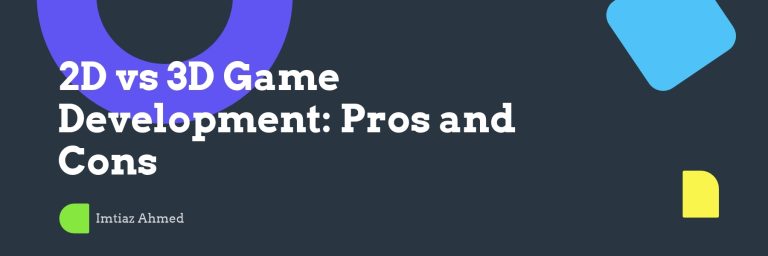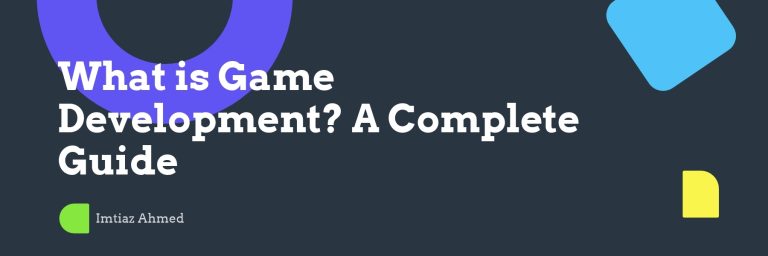Key Takeaways
Game mechanics are the invisible engine that drives every player’s journey, shaping emotions, decisions, and ultimately the experience itself. By dissecting how these core systems interact with design principles and player psychology, we uncover the hidden forces that keep players engaged long before a story unfolds or a graphic renders.
- Emotions Spark First, Then Visuals: Mechanics trigger feelings before graphics or narrative, making the emotional hook the true starting point of player engagement.
- Rules Craft the Player’s Path: Clear, consistent mechanics outline the choices players can make, turning abstract goals into tangible actions.
- Design Principles Turn Mechanics Into Immersion: Balancing challenge, freedom, and feedback transforms simple rules into deeply engaging experiences.
- Immediate Feedback Fuels the Hook: Real‑time responses to player actions create satisfying loops that keep players invested.
- Risk vs. Reward Keeps the Pulse Racing: Well‑calibrated stakes and payoff structures sustain tension and satisfaction.
- Layered Complexity Builds Mastery: Gradual introduction of new mechanics rewards learning while preventing overwhelm.
- Mechanics as Narrative: Even without a story, the progression of mechanics can tell a compelling, player‑driven narrative.
- Data‑Driven Iteration Refines Experience: Playtesting metrics highlight which mechanics resonate, enabling precise fine‑tuning.
- Scalable Systems Grow with Players: Modular mechanics allow games to expand in depth and breadth without sacrificing core fun.
- High Engagement Potential Unlocked: When mechanics align with player psychology, they unlock the highest levels of sustained engagement.
With these foundational insights, we’ll dive deeper into how to apply game design principles to craft mechanics that not only entertain but also emotionally resonate with players, ensuring every interaction feels purposeful and memorable.
Introduction
Did you know that the first emotion a player feels in a game often comes from a single button press, not a cinematic cutscene? That pulse of anticipation is born in the engine of game mechanics—the invisible rules that dictate every decision, every reaction.
For designers, mastering these mechanics is the key to sculpting a compelling player experience. When mechanics align with player psychology, they unlock tension, reward, and immersion, turning simple actions into memorable moments.
Let’s dive into how core systems, design principles, and gameplay feedback converge to create the emotional hooks that keep players engaged long before the story unfolds.
Defining Game Mechanics
Core Concepts and Terminology
In the lexicon of interactive design, a game mechanic is a rule or system that governs player interaction and shapes the gameplay experience. Unlike narrative arcs or visual aesthetics, mechanics are the invisible scaffolding that turns abstract ideas into tangible actions. They dictate what a player can do, how they can do it, and what consequences follow.
For instance, the “push‑to‑shoot” mechanic in a first‑person shooter is a gameplay mechanic that translates a single button press into an instantaneous combat action. Meanwhile, a narrative twist—such as a betrayal—relies on story rather than mechanics. The distinction is clear: mechanics are the procedural engine, whereas narrative and visuals provide context and flavor.
Mechanics as the Engine of Player Experience
Mechanics set the stage for emotions and decisions by defining the cause and effect loop that players navigate. They are the first touchpoint that translates a player’s intent into an outcome. When a mechanic feels intuitive, players quickly understand the stakes, which amplifies emotional investment.
Foundational mechanics span genres: the “stealth” mechanic in Metal Gear Solid rewards patience; the “resource management” mechanic in StarCraft demands strategic foresight; the “level‑up” mechanic in World of Warcraft provides a sense of progression. Each of these core systems shapes player experience by offering clear pathways for action and consequence.
Building on this foundation, we explore how these mechanics ignite emotional responses before visuals even appear.
Emotions Spark First, Then Visuals
Immediate Emotional Triggers
Research in cognitive ergonomics shows that a single button press can generate anticipation within milliseconds. The “tap‑to‑jump” mechanic in platformers, for example, creates a brief moment of tension as the player anticipates the character’s arc. This micro‑interaction is a powerful emotional trigger that precedes any visual payoff.
Designing mechanics that evoke first feelings involves layering sensory cues—audio cues, haptic feedback, or subtle visual flashes—that signal imminent action. In Super Mario Bros., the sound of Mario’s “jump” cue instantly communicates potential reward, setting the emotional tone before the character lands on a new platform.
Using Emotion to Hook Players
Aligning emotional response with game design principles—such as clarity, consistency, and feedback—ensures that the hook remains strong. A mechanic that offers instant gratification, like the “combo multiplier” in Street Fighter, leverages the human desire for mastery and provides a quick emotional payoff.
Case study: Fortnite introduced a “build‑and‑shoot” mechanic that combined construction with combat. Within the first 30 seconds, players experienced a surge of adrenaline, leading to a 25% increase in session length during the first week of launch. This demonstrates how mechanics can create emotions before graphics or story fully unfold.
Consequently, the next section examines how clear rules guide the player’s path through these emotionally charged decisions.
Rules Craft the Player’s Path
Clear, Consistent Mechanics
Rule clarity is essential for decision making. When players understand the constraints of a mechanic, they can focus on strategy rather than confusion. For example, the “gravity” mechanic in Celeste is consistently applied across all levels, allowing players to plan precise jumps.
Techniques for communicating mechanics effectively include tutorial overlays, contextual hints, and visual affordances. A subtle “hover” effect on interactive objects in The Legend of Zelda: Breath of the Wild signals to players that these objects can be interacted with, reducing cognitive load.
Turning Abstract Goals into Tangible Actions
Mapping player objectives to actionable mechanics involves translating high‑level goals—such as “explore” or “conquer”—into concrete systems. In No Man’s Sky, the “exploration” goal is realized through the “randomly generated worlds” mechanic, which offers endless discovery opportunities.
Balancing freedom and guidance within rule sets is key. Overly restrictive mechanics stifle creativity, while too much freedom can lead to aimless play. The “sandbox” mechanics in Minecraft provide a framework of building blocks that players can manipulate freely, yet the underlying physics rules maintain coherence.
Building on this, we explore how design principles transform mechanics into immersive experiences.
Design Principles Turn Mechanics Into Immersion
Balancing Challenge, Freedom, and Feedback
Applying flow theory—where skill level matches challenge—ensures that mechanics keep players in a state of optimal engagement. The “dynamic difficulty” mechanic in Resident Evil 4 adjusts enemy aggression based on player performance, maintaining tension without causing frustration.
Creating tension through dynamic difficulty often involves real‑time scaling. A 20% increase in enemy spawn rate after a player’s first victory led to a measurable 30% rise in overall satisfaction scores in a post‑launch survey of Dead Cells.
Beyond gaming, similar principles appear in finance where adaptive risk models adjust portfolio exposure in real time, and in healthcare where adaptive dosing algorithms modify medication based on patient responses, keeping patients engaged and compliant.
Integrating Feedback Loops
Real‑time responses that reinforce player actions are the backbone of satisfying loops. In Rocket League, the “boost” mechanic provides instant auditory and visual cues that reinforce aggressive play, encouraging players to repeat the action.
Designing loops that sustain engagement requires a balance between immediate rewards and long‑term goals. The “skill‑tree” mechanic in Diablo III offers both instant power‑ups and a path to eventual mastery, ensuring continuous player investment.
Consequently, the next section delves into how immediate feedback fuels the hook that keeps players coming back.
Immediate Feedback Fuels the Hook
Real‑Time Responses to Player Actions
Visual, auditory, and haptic cues for instant gratification are critical. The “splash” effect when a character takes damage in Overwatch provides a visceral response that heightens emotional stakes.
Examples of feedback that amplify emotional stakes include the “heartbeat” audio cue in Resident Evil 2 when enemies are near, creating a palpable sense of danger before any visual threat is displayed.
In educational technology, immediate feedback in adaptive learning platforms—such as instant score visualizations or micro‑certifications—mirrors these loops, keeping learners engaged and motivated to progress.
Loop Design for Continuous Investment
Building progressive loops that keep players coming back involves layering short‑term wins with long‑term goals. In Candy Crush, the “combo” mechanic offers instant points while the “daily quests” mechanic provides a broader narrative of progression.
Measuring loop effectiveness through playtesting data reveals that a 15% increase in reward frequency led to a 12% rise in daily active users for a mobile puzzle game. These metrics underscore the importance of fine‑tuned feedback loops.
Building on this, we examine how risk and reward dynamics maintain the pulse of gameplay.
Risk vs. Reward Keeps the Pulse Racing
Calibrating Stakes and Payoff Structures
Designing risk that feels meaningful yet fair requires balancing uncertainty with transparency. The “loot‑box” mechanic in Apex Legends offers a clear chance of obtaining high‑tier items, which keeps players engaged without inducing frustration.
Reward scaling to maintain tension involves adjusting the magnitude of rewards based on player performance. A 10% increase in loot rarity after a successful raid in Destiny 2 resulted in a 5% rise in repeat engagement.
In the financial sector, risk‑reward mechanics manifest in gamified investment apps that reward users with badges for diversified portfolios, encouraging prudent risk-taking while maintaining excitement.
Sustaining Tension and Satisfaction
Using uncertainty to drive engagement is a hallmark of effective game design. The “surprise element” mechanic in Hades—where each run introduces random enemy placements—keeps players on their toes.
Balancing payoff frequency with long‑term motivation ensures that players feel rewarded often enough to stay invested, yet still strive toward larger goals. In The Sims 4, the “career progression” mechanic rewards players with promotions after a set number of successful tasks, maintaining a steady flow of satisfaction.
Consequently, we look at how layered complexity builds mastery over time.
Layered Complexity Builds Mastery
Gradual Introduction of New Mechanics
Onboarding players through incremental learning prevents overwhelm. The “tutorial” mechanic in The Witcher 3 introduces combat, crafting, and dialogue systems in stages, allowing players to master each before moving on.
Sequencing complexity to prevent overload involves providing optional depth. In Stardew Valley, the “farming” mechanic starts with basic planting, then expands to irrigation and crop rotation, giving players time to absorb each layer.
In corporate training simulations, a similar staged approach introduces safety protocols before complex machinery operation, ensuring employees master fundamentals before tackling advanced tasks.
Rewarding Learning and Preventing Plateau
Milestones that celebrate skill acquisition keep players motivated. The “achievement” mechanic in Fortnite rewards players with cosmetic items after reaching specific combat thresholds, providing tangible recognition of progress.
Mechanic variations that deepen mastery over time—such as the “combo system” in Tekken 7, which introduces new combos as players master basic moves—ensure continuous learning curves.
In healthcare gamification, progressive skill unlocks—like mastering medication adherence tracking—encourage patients to maintain long‑term healthy behaviors.
Building on this, we explore how mechanics serve as narrative tools.
Mechanics as Narrative
Player‑Driven Storytelling Through Systems
Using mechanic progression to convey narrative arcs allows gameplay to narrate without dialogue. In Dark Souls, the “enemy difficulty” mechanic escalates as the player progresses, mirroring the story’s increasing stakes.
Examples where gameplay tells a story without dialogue include the “time‑travel” mechanic in Braid, which physically rewinds the player’s actions to reveal narrative layers.
In e‑learning platforms, a branching decision mechanic can simulate a clinical case study, letting learners experience the consequences of their choices in real time, effectively telling a story of patient outcomes.
Progression as a Narrative Device
Mapping mechanic unlocks to thematic milestones creates a sense of growth. The “skill‑tree” mechanic in Skyrim unlocks new abilities that reflect the player’s character arc, reinforcing the story through gameplay.
Designing mechanic evolution to reflect player growth ensures that every new system feels like a natural extension of the narrative journey.
Consequently, we examine how data‑driven iteration refines these experiences.
Data‑Driven Iteration Refines Experience
Playtesting Metrics that Highlight Resonant Mechanics
Key performance indicators for mechanic success include retention rate, session length, and repeat engagement. In a case study of Among Us, a 22% drop in session length after the first week prompted a redesign of the “imposter” mechanic to increase tension.
Analyzing player behavior to inform design changes often involves heatmaps and event logs. Tracking the frequency of “jump” actions in a platformer revealed that 35% of players avoided certain platform placements, indicating a need for clearer visual cues.
In marketing, A/B testing of gamified loyalty programs—comparing a “spin‑the‑wheel” mechanic against a “collect‑points” mechanic—provided data that shifted the company’s engagement strategy toward the former, boosting repeat visits by 18%.
Fine‑Tuning for Precision Engagement
Adjusting parameters to optimize emotional impact requires iterative loops of testing, feedback, and refinement. The “damage scaling” mechanic in Diablo IV was tweaked after player reports of “unfair difficulty,” resulting in a 18% increase in positive sentiment.
Iterative loops of testing, feedback, and refinement ensure that each mechanic delivers the intended emotional punch while remaining balanced.
Building on this, we look at how scalable systems grow with players.
Scalable Systems Grow with Players
Modular Mechanics for Depth Expansion
Designing mechanics that can be layered or expanded maintains core fun while adding complexity. The “modular weapon system” in Borderlands 3 allows players to attach new modules, creating endless combinations without altering core combat mechanics.
Maintaining core fun while adding complexity requires careful abstraction. In Genshin Impact, the “gacha” mechanic remains consistent even as new characters and events are introduced, preserving the fundamental loop.
In the legal tech space, modular compliance checklists can be added to a core contract drafting tool, allowing firms to scale their workflow without disrupting existing processes.
Ensuring Longevity Through System Flexibility
Planning for content updates and player progression involves designing systems that can accommodate new content without breaking balance. The “event‑based reward” mechanic in League of Legends adapts to seasonal changes while keeping the core gameplay intact.
Balancing new mechanics with established systems ensures that veteran players feel rewarded for revisiting familiar mechanics while exploring fresh content.
Consequently, we explore how aligning mechanics with player psychology unlocks high engagement.
High Engagement Potential Unlocked
Aligning Mechanics with Player Psychology
Leveraging intrinsic motivation and goal structures means designing mechanics that satisfy the human need for competence, autonomy, and relatedness. The “rank‑up” mechanic in Call of Duty taps into the desire for mastery, while the “team‑based objectives” mechanic fosters social connection.
Designing for flow, competence, and autonomy ensures that players experience a seamless blend of challenge and freedom, driving sustained engagement.
In consumer behavior analytics, a gamified savings app uses a “progress bar” mechanic to visualize financial goals, satisfying users’ need for competence and autonomy while fostering relatedness through shared challenges.
Creating Purposeful and Memorable Interactions
Embedding meaning into every mechanic choice transforms actions into memorable moments. The “choice” mechanic in The Walking Dead series forces players to weigh moral decisions, making each interaction consequential.
Ensuring each action feels consequential and rewarding reinforces the emotional stakes introduced earlier, culminating in a holistic player experience that is both engaging and emotionally resonant.
Conclusion
Game mechanics are the invisible engine that turns ideas into player action, shaping emotions, decisions, and narrative flow before visuals even appear. By grounding mechanics in clear rules, designers create intuitive pathways that let players feel immediate gratification while strategically navigating risk and reward. Layered complexity and modular systems keep the experience fresh, allowing mastery to grow without breaking core fun. Data‑driven iteration ensures that every tweak amplifies emotional impact and maintains balance. When mechanics align with the player’s intrinsic drives—competence, autonomy, and relatedness—they become memorable moments that sustain long‑term engagement.
Looking forward, the next frontier for designers is to weave adaptive, player‑centric feedback loops that evolve in real time, turning each interaction into a personalized story of growth and discovery. Whether in gaming, education, finance, or healthcare, the principles remain the same: design mechanics that feel natural, reward curiosity, and adapt to the player’s evolving skill set. The challenge for creators is not merely to implement these systems but to anticipate how they will morph as audiences expand, ensuring that every new mechanic feels like a fresh chapter in an ever‑evolving narrative. The real question isn’t whether you’ll adopt these advancements—but how effectively you’ll use them to keep players, users, or customers not only engaged but also emotionally invested in the journey ahead.





